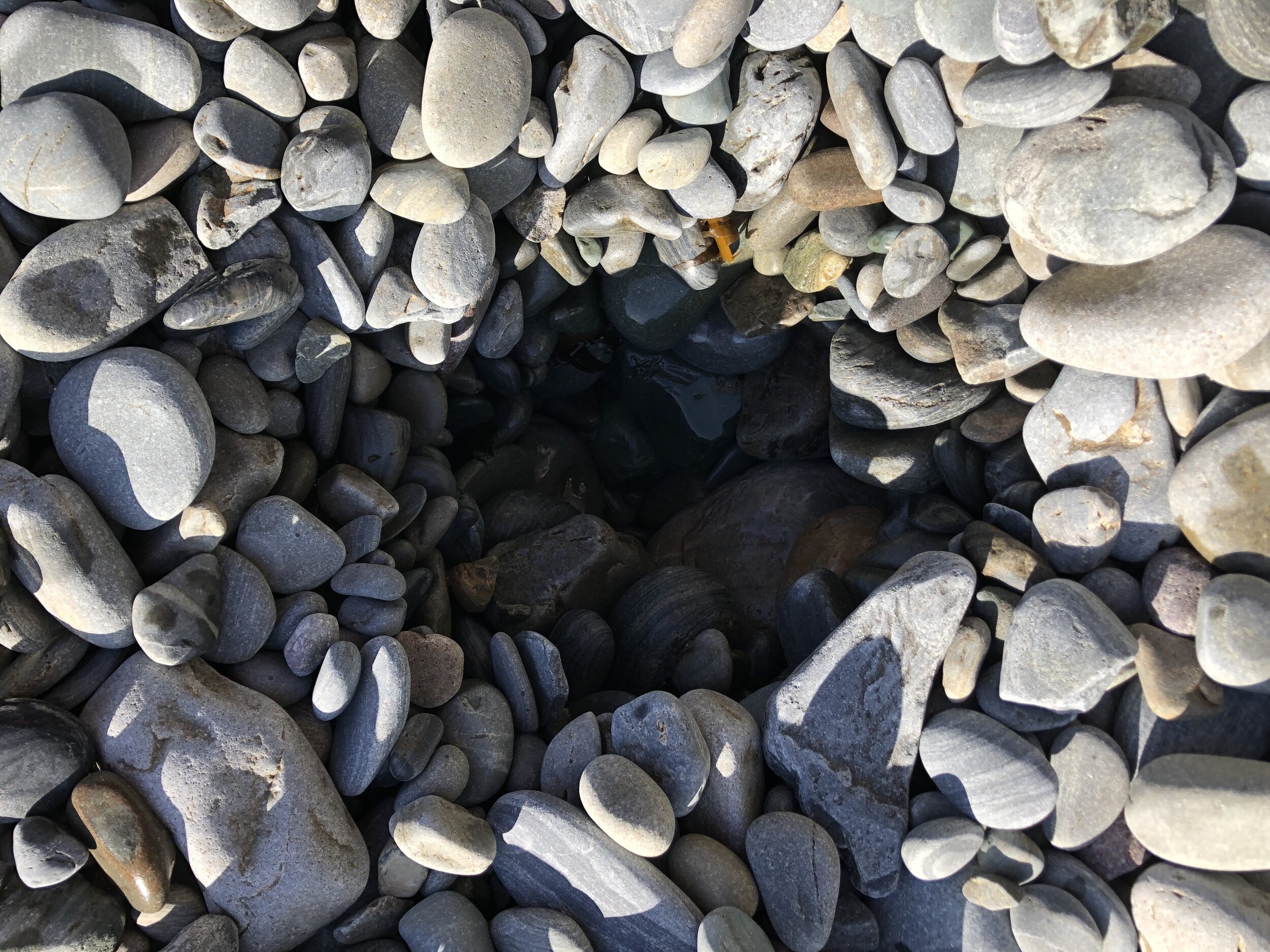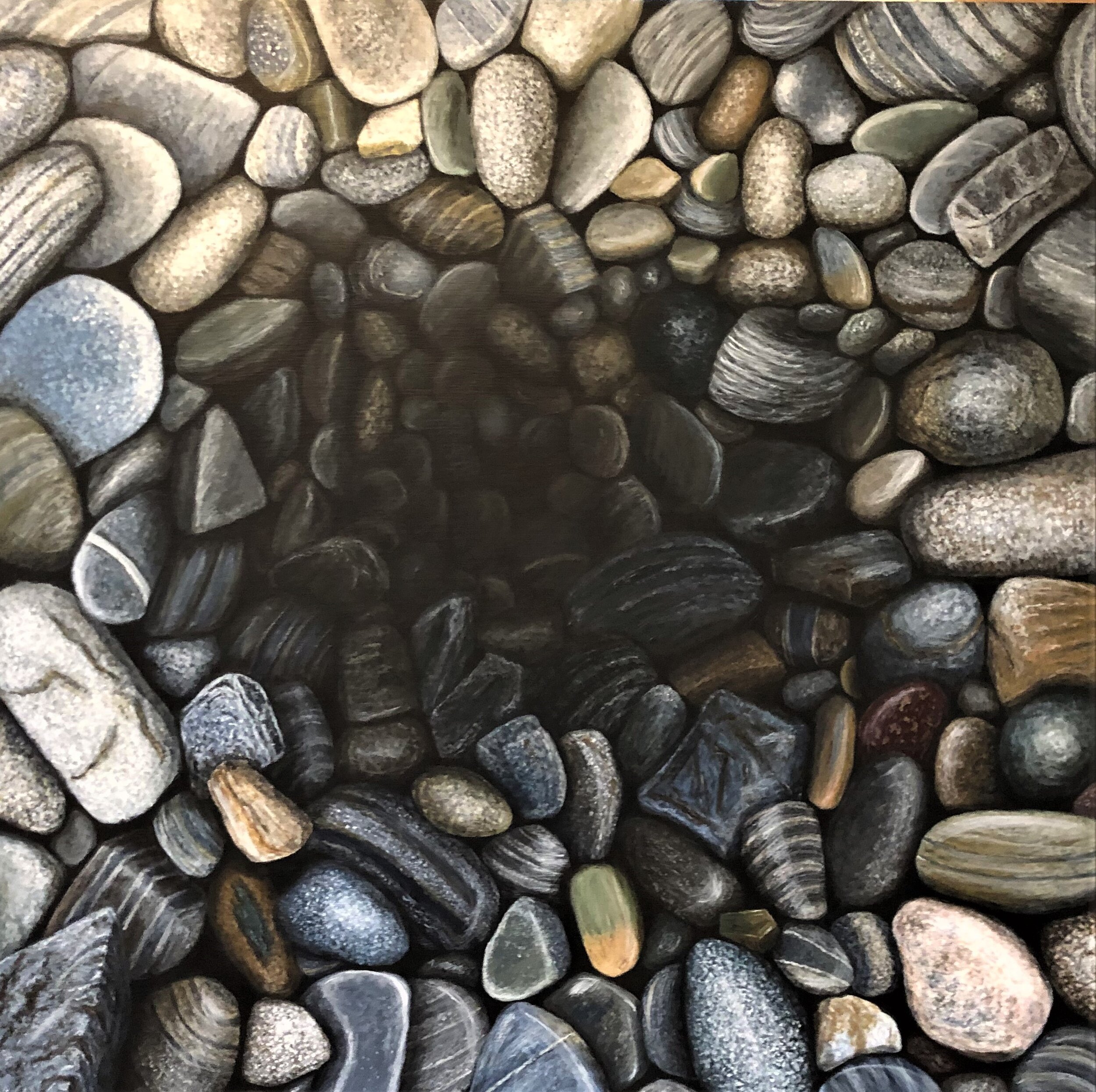The Abyss
Over the years as I observed and painted more and more beachrocks I became curious about what lies under the surface of the beach…more rocks of course. But how many? The number seems infinite. The rocks on a beach move constantly with the moods of the sea. Sometimes the beach rocks are piled high, sometimes they are scattered with sandy spots poking out here and there. The endless soft caress of calm seas or the hard pounding of violent storms change the beachscape. I dig down with bare hands underneath the rocks, as far as I can go without the structure tumbling in. As I do this on different beaches the holes I create have their own characteristics, no two are alike.
My choice of beach is not random. Some beaches hold memories from my childhood; some have been reached on hiking trips; some are beautiful discoveries that I have found while looking at topographic maps or aerial photographs, names and shapes on paper that create a need to go see what’s there.
The structure created, Shoe Cove, NL
Sometimes I dig my way down to sand and the smaller rocks tumble easily, the hole is wide and not so deep and dark. On beaches of larger rocks I can go straight down, pulling the rocks from the dark depths. Pulling the rocks out and placing them on the surface feels meditative, I place them here and there carefully around the top edge. I stand up and look down, it is an abyss, a dark hole that can collapse unless you know when to stop.
Journal notes and sketch
I sketch and photograph the hole looking straight down and recreate the structure in my studio on 20 x 20 inch birch panels using acrylic paints. The paintings are detailed, I start with the lighter rocks along the edge, working my way slowly around and around the surface until that dark hole pulls me in.
The completed painting, The Abyss at Shoe Cove, 20 x 20 in, acrylic on birch panel



